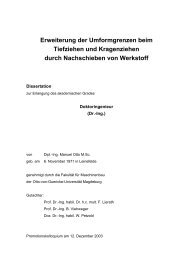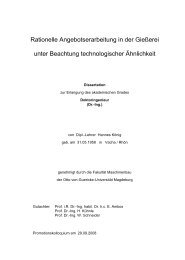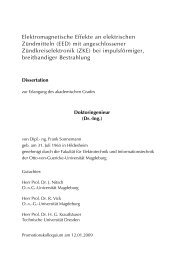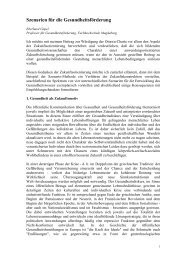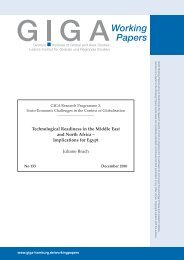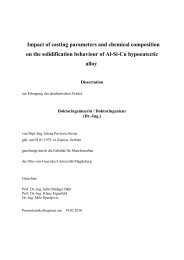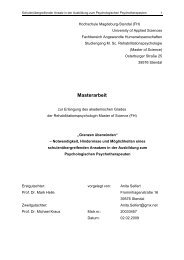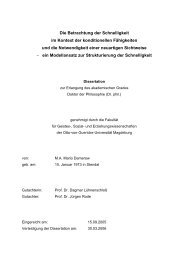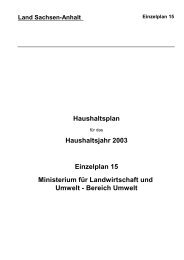Chapter 1
Chapter 1
Chapter 1
You also want an ePaper? Increase the reach of your titles
YUMPU automatically turns print PDFs into web optimized ePapers that Google loves.
BOX 3.1<br />
Tunisia-European Union free trade agreement: Estimated benefits and costs<br />
Tunisia already enjoys relatively open and preferential access to the EU market. Nevertheless, the static trade and dynamic benefits to the<br />
Tunisian economy from an FTA with the EU are significant-an estimated 4.5 percent of GDP a year (TD 720 million), provided Tunisia<br />
removes the high tariffs on the most protected sectors in the short-term and follcws appropriate exchange rate policies. It would, thus, be<br />
beneficial for Tunisia to compress the schedule of QR eliminations and tariff reductions currently agreed with the EU. If Tunisia undertakes<br />
full liberalization with the rest of the world, the gains would increase to an estimated 5.3 percent of GDP a year (TD 850 million) and possible<br />
trade diversion costs would be diminished or eliminated.' The benefits from the accord with the EU come almost equally from three<br />
sources: (I) the preferential reduction of Tunisia's remaining tariff and nontariff baniers with the EU; (2) the harmonization of product standards<br />
with European requirements; and (3) reduced costs in trade administration from improved transportation and telecommunications.<br />
Lowering tariffs reduces government revenues. To keep the real value of govemment revenues unchanged, the IDF study estimates that<br />
the uniform VAT rate must increase from an average of 20 percent to 26 percent. The problem, however, is that Tunisia does not apply the<br />
VAT in a uniform manner across sectors. The study estimates that if the Govemment eliminated exemptions and moved to a uniform VAT<br />
rate, it could lower the current average VAT rate (even if the Govemment lowered tariffs), and the revenue welfare impact would be even<br />
greater than the benefits from tariff reductions under a free trade agreement with Europe. The Govemment needs to undertake the necessary<br />
fiscal reforms which will ensure that tax revenues from improved collection and wider application of the VAT compensate for reductions<br />
in tariff revenues (see chapter I).<br />
The estimated labor adjustment costs are based on the assumption that about 2 percent of the labor force will have to change jobs within<br />
the next three years. There are also estimated short-run capital adjustment costs, due to changes in relative prices as some plants and equipment<br />
become redundant and unadaptable for use in other industries. Total short-term costs are estimated at less than TD 150 million, while<br />
the welfare benefits are larger (TD 720 million).<br />
a. See A Panagariya, 'Rethinking the New Regionalism,' 1994, for discussion of trade diversion costs.<br />
Source: IDF 1995; Rutherford, Rutstrnm, and Tarr 1995.<br />
market for services and agricultural goods have been post- industries-closing down some activities and opening new<br />
poned for four years, except for the olive oil quota, which activities and investments-takes longer (and is therefore<br />
will be enlarged by 3 percent a year over the next four years. more costly) and (2) the slower pace often increases the<br />
The EU market already grants preferential access to most likelihood of reversals, as those parties opposed to the trade<br />
Tunisian manufactured goods, while Tunisia still has high liberalization have more time to block changes.<br />
tariffs and some QRs against EU products. Nevertheless, this agreement with the EU marks a critical<br />
A preliminary review of the agreement shows that all step in Tunisia's liberalization program, and offers the counremaining<br />
QRs (except for some agriculture, processed TABLE 3.3<br />
foods, and some textile items) will be removed as soon as the Tunisia-EU FTA tariff liberalization schedule of<br />
agreement takes effect. Tariff protection is to be removed Industrial products<br />
gradually, with imports that are most likely to compete with (pe-cent)<br />
(and potentially disrupt) domestic production, being phased of Percent shwe of Pement share of<br />
in over several years. Safeguard measures have also been libeWizadlon 1992 domestJc 1994 EU<br />
included in the agreement in case of dumping or other inter- Number products production' Importsb<br />
nal disruption, permitting reinstatement of the original tariff I in 1996 14 12<br />
rates or the introduction of additional tariffs of up to 25 per- 2 5 years,<br />
cent for up to five years, for industries suffering damage starting in 1996 20 28<br />
from the liberalization. Table 3.3 shows the share of total 3 12 year,<br />
manufactured EU imports to Tunisia that will be liberalized starting in 1996 22 30<br />
ia a given time perio an I gives a rough indication of the<br />
magnitude and pace of the liberalization process.<br />
4<br />
5<br />
8 years,<br />
starting in 2000<br />
Exempted<br />
43<br />
I<br />
29.5<br />
0.5<br />
The main drawbacks to the gradual implementation of<br />
a. Warld Bank cabjolaioi,s, 1995.<br />
trade liberalization are that (1) the adjustment of domestic b. GCaemment cak:ulations. 1 995.<br />
STRENGTHENING MARXET FORCES 31




